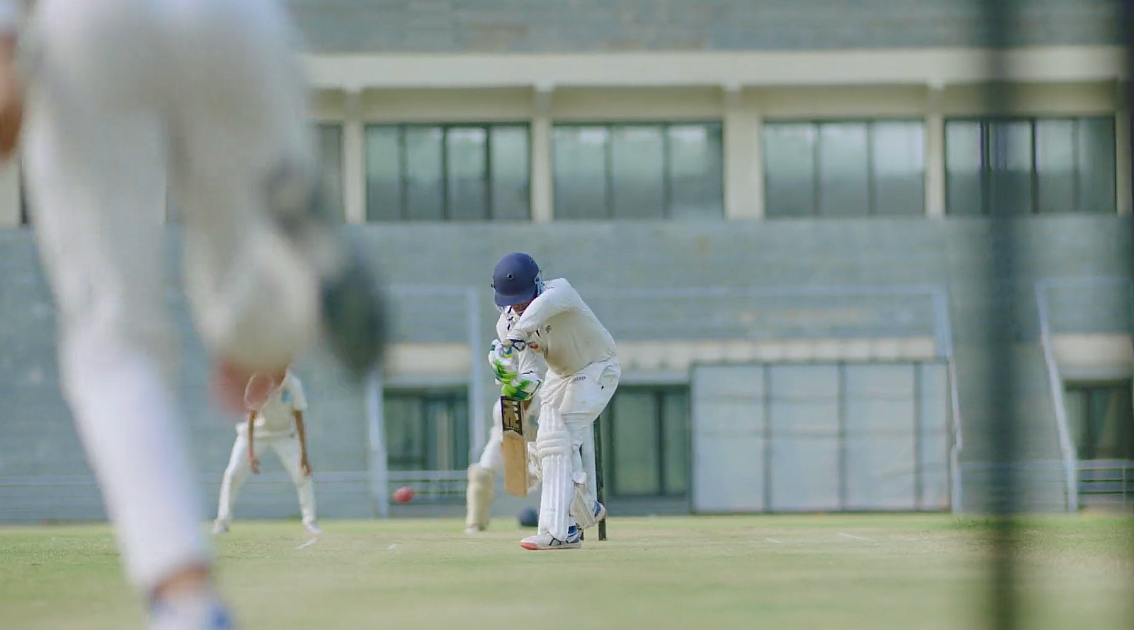
New Cricket Format: Test Twenty Launched Rules, Global Selection Explained
Cricket's 'next chapter' has begun, with the unveiling of its fourth format – Test Twenty. As the name suggests, it blends "Test strategy with T20 intensity", and is the world's first 80-over format.
Set to make its global debut in 2026 with a new tournament – Junior Test Twenty Championship – the newest format is designed exclusively for young players, aged 13 to 19, giving them a global stage to showcase their skills, in a uniquely tailored setting.
Recommended For You Commvault announces expanded local partnership with HPE at Gitex GlobalCricket greats like AB de Villiers, Matthew Hayden, Harbhajan Singh, Sir Clive Lloyd, endorsed the newest innovation, and unveiled the game alongside Gaurav Bahirvani, architect of the fourth format, and Founder and CEO of Test Twenty.
Stay up to date with the latest news. Follow KT on WhatsApp Channels.
Take a look at the features of the format, the rules, and what global selection will look like:
Basic features of format- 80 overs: Each team plays two innings of 20 overs, with first-innings scores carried into the second.
The match will be completed in a single day. The outcomes can include win, loss, tie, or draw. In case of a tie, the game will go to a super over. For a draw, the team batting must retain at least 5 wickets till the last ball.
The Junior Test Twenty Championship will feature six founding franchises, three international and three Indian. Each of these franchises will be co-owned by the "next generation of icons", according to the Test Twenty website.
These include the children of celebrated cricketers, actors, entrepreneurs, and global personalities "who grew up with the game in their blood."
Global selectionInterested applicants can register on the official website. Selections will then follow two different routes:
- Direct Entry, which includes applicants recommended by recognised coaches, administrators, or cricketers
Standard Entry Route, which begins with AI-powered selection and city trials across India and the world. The system will use an AI-driven scouting engine powered by motion sensors, data intelligence, and advanced player profiling, to make the selection process "transparent, merit-based, and truly global."
From these trials, the National and World Pools of 1,000 players will be formed. They will then be assessed through the Test Twenty® Intelligence IndexTM (TTII) – a system measuring skill, decision- making, and temperament.
Out of the 1,000 players, the top 300 will advance to the Global Auction Pool. Six franchises will then draft 96 players, which include where six franchises draft 96 players (eight Indian and eight international each). The remaining 204 form the Wildcard Pool.
Rules of the 'fourth format'According to the Test Twenty website, the new format will introduce certain rule adjustments, while retaining the existing foundational laws of cricket.
Rule 1: PowerplayEach team gets one Powerplay per match; the captain can choose the innings to take the Powerplay.
The Powerplay will last for four consecutive overs; only 2 fielders are allowed outside the 30-yard circle.
If the captain does not declare the Powerplay by the end of the 7th over of the second innings, it will be automatically enforced in overs 7 to 10.
Rule 2: Follow-onIf the team batting second trails by 75 or more runs, after both sides have completed first innings, the captain of the first team can opt to enforce a follow-on. This means the team batting second will bat again immediately, playing their second innings without a break between innings. The first team then plays their second innings as normal.
Rule 3: Early collapse clauseIf a batting team is bowled out before 10 overs are completed in their first innings, then three remaining overs will be added to the opponent's first innings. If the batting team is bowled out after 10 overs, this rule won't apply. The second innings for both teams remains 20 overs each, regardless of the penalty.
Rule 4: Bowling allocationA maximum of five bowlers can be used per match, with each bowling not more than eight overs, across both innings.
However, the overs do not need to be split evenly; the over allocation lies at the discretion of the captain.
Rule 5: Wides, No-BallsThe standard T20 law applies: Wides and no-balls are penalised with one run and an extra delivery.
However, umpires may use discretion in the second innings, where scoreboard pressure is high - if a batter deliberately moves across the crease, the call may not be given wide (borrowing from Test match spirit).
A new cumulative penalty system: If a bowler delivers three or more no-balls or wides within a single over, the batting side shall be awarded an additional three penalty runs against the bowling team.
Rule 6: Conditional 'draw'If the second batting system has lost less than five wickets up till the second innings, they can choose to play for a Draw.
However, once the fifth wicket falls, the option of a draw is removed; the match must result in either a win or a loss. However, if weather interruptions prevent a clear result, a 'draw' is enforced.
Rule 7: Over rate, time controlBefore the match, the referee will allocate a time cap for each innings. If a team fails to maintain the required over rate, a 5-run penalty will be enforced, along with the loss of one strategic time-out.
Rule 7: Tie, super sessionIn the event of a tie on aggregate scores, the result shall be decided by a Super Session - a one-over eliminator played by both sides. If still tied, the team with the higher total boundary count across both innings will be declared the winner.

Legal Disclaimer:
MENAFN provides the
information “as is” without warranty of any kind. We do not accept
any responsibility or liability for the accuracy, content, images,
videos, licenses, completeness, legality, or reliability of the information
contained in this article. If you have any complaints or copyright
issues related to this article, kindly contact the provider above.


















Comments
No comment